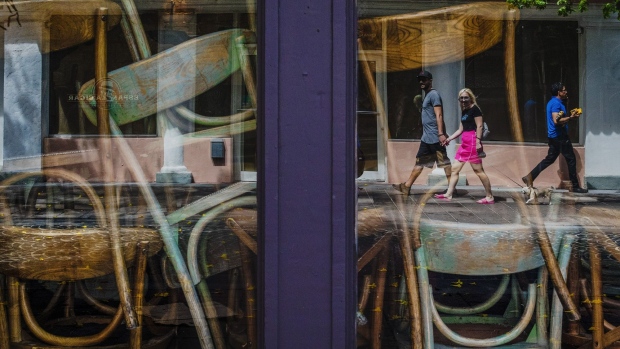Oct 30, 2020
Fed cuts Main Street loan minimum by 60%, widening borrower pool
, Bloomberg News

The Federal Reserve sharply reduced the minimum loan size in its Main Street Lending Program, potentially opening the emergency facilities to more U.S. businesses at a time when Congress remains deadlocked on additional aid.
By lowering the minimum loan size to US$100,000 from US$250,000, the Fed on Friday was responding to widespread calls to make Main Street easier to access for small businesses battling to survive the coronavirus pandemic. Fewer than 400 loans have been made since the program went operational in July for a total of US$3.7 billion, a fraction of the total US$600 billion potentially available.
The Fed also changed the fee structure so that banks will get paid more for facilitating loans under US$250,000. Businesses that received under US$2 million in Paycheck Protection Program loans will now be eligible for the Fed’s program. All five members of the Board of Governors voted to approve these changes.
“This is a major victory in our push to give small businesses the tools they need to get through the pandemic,” Donna Shalala, a congresswoman from Florida and member of the CARES Act Congressional Oversight Commission, said in a statement released Friday. “This is a great first step, but there’s definitely more work to be done. We’re going to keep pressing for more oversight and accountability.”
The Fed’s announcement comes at the end of a tumultuous week in markets and the global economy as virus cases surge in parts of the U.S. and Europe, darkening the outlook for the pace of the recovery. Congress and the White House have been unable to pass further stimulus measures ahead of next week’s U.S. presidential election, leaving businesses and unemployed Americans without added support as the country fights another wave of infections.
The adjustments to the Main Street program follow months of talks between Congress and the White House that ultimately failed to deliver more fiscal stimulus. Lawmakers, business owners and industry groups have called for changes such as reducing the minimum loan size and further incentive for banks to provide support for small businesses.
Grants vs Loans
Chair Jerome Powell has argued that businesses may need grants, not loans, to get through the lengthy pandemic. But the PPP program, whose loans turned into grants if companies use a certain amount of the funds for payroll retention, expired in August. The Fed is legally only allowed to loan money.
Although the program changes may come at a clutch time for businesses with few options right now, the demand for small loans has so far been limited. Only 14 per cent of Main Street lending done through the end of September was for loans under US$1 million.
In a September hearing before the House Financial Services Committee, Powell pointed to the limited appetite for such small borrowing. He added that an entirely new program might be required for loans under US$100,000, which often require personal guarantees.
In order to encourage banks to make loans under US$250,000, the Fed got rid of the 100 basis-point transaction fee -- which lenders will still pay to the central bank on larger loans -- raised the loan-origination fee that lenders charge borrowers and increased the servicing expense that the Fed pays to the banks. Other program provisions, including banks’ retention of 5 per cent of each loan that they sell to the Fed, remain unchanged.
Businesses can exclude PPP debt under US$2 million, as long as it’s expected to be forgiven under the Small Business Administration’s payroll provisions, from calculations of their eligibility to apply for a Main Street loan.
The Main Street program is set to expire on Dec. 31. It’s backed by US$75 billion of taxpayer money authorized by Congress in the CARES Act.